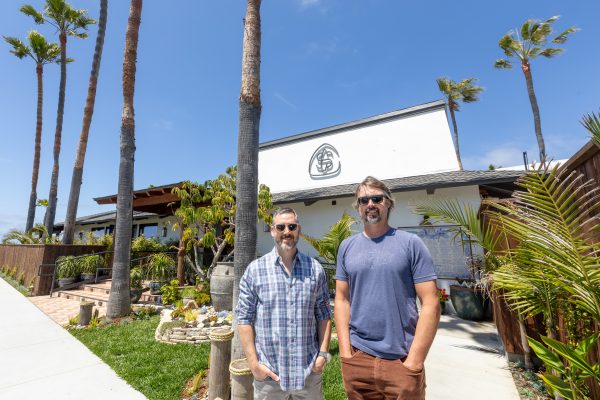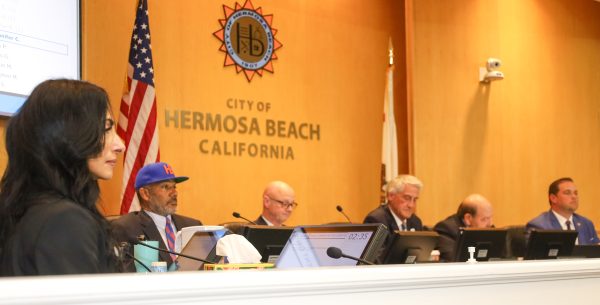
Twenty part-time, pint-size farmers reaped the joy of harvest time one morning last week outside Lincoln Elementary. They prodded and picked and examined and identified the fruits of their labors – mostly vegetables, actually – before getting down to the real business at hand. They ate.
Kindergartners, as eaters, aren’t known for their leafy-loving ways. But Ms. Jessica Mora’s kindergarten class happily assembled a midmorning snack that consisted of bib lettuce, sugar snap peas, mint leaves, and a mix of edible flowers that included violas, pansies, and spicy nasturtiums.
Most of the snack’s ingredients came directly from the garden the kindergartners and the rest of the elementary school kids at Lincoln had been tending for the past four months. And now, the kids even took care in presenting their food artfully atop a cracker and a little cream cheese.
“You made a smiley face!” one little girl exclaimed, eying the arrangement of her classmate’s snack.

“I made eyes!” said Nicola Ely. “He’s gonna eat me up!”
The harvest celebration was part of LiveWell Kids, a Beach Cities Health District program aimed at combating childhood obesity and creating greater environmental and health-conscious awareness among students. All 4,000 students at the eight Redondo Beach Unified School District elementary schools participate in the program, which includes physical activity, nutrition and garden education and provides all the schools with fresh fruits and vegetables for cafeteria salad bars five days a week.
The program, in its second year, has already achieved a slight decrease in children’s average Body Mass Index and an uptick in vegetable consumption at school cafeterias.
BCHD garden coordinator Janel Bagby said that gardening has benefits that are less measurable but no less important.
“We live in a fast paced society in which a lot of families have two parents working,” Bagby said. “So many people are into fast food-type things in society. I think what a garden provides – not to take away from action sports or technology or all these wonderful things – but it takes us back to something simpler, the quiet and the calm and the connection with the earth.”
“It’s about a return to simplicity,” Bagby added. “It’s teaching children to make healthy choices, teaching them to eat raw from the garden and eat organically. This gives them respect for their bodies and eating healthy.”
Bagby said that in addition to learning about different plants – kids come to recognize mint, for example, both for its healthful properties and its ubiquity in everything from tea to toothpaste – students get a glimpse of the life that surrounds a garden. They see earthworms and ladybugs doing their own gardening work, for example, and learn the impacts that rain and wind have on their garden.
Three little boys at another campus started their own gardening club. Another little boy told Bagby one day that the garden changed how he felt. “I walk around angry all the time,” he told her. “But for some reason I come to the garden and I feel peaceful.”
Another little girl found a revelation in eating edible flowers. “I never ate a flower before,” she told Bagby. “It tastes pink!”
A key component of the entire LiveWell Kids program is parent involvement. Parents are educated in different components of the program and become nutrition and gardening docents. Bagby calls docents Susan Hink and Kelly Wolschon her “gardening angels.” Hink, who has volunteered at the school for three years, said that kids become invested in their gardens.
“They love to water,” Hink said. “And they love to eat stuff from the garden because they grew it. Otherwise, they wouldn’t.”
Both Lincoln and Madison Elementary also participate in a Community Supported Agriculture program in which parents pay $30 for a large box of fresh produce from Tanaka Farms every two weeks. The boxes contain an assortment of whatever happens to be in season.
Lincoln Principal Samantha Leddel said there has been a noticeable change in eating habits throughout the school. Parents have been asked not to bring fast food to their kids for lunches, and ice cream is no longer offered in the cafeteria. “That was a tough one,” Leddel said. “But really, it’s healthier.”
Fruit, however, has become a genuinely popular dessert alternative. And the salad bar – particularly when it offers lettuce grown out in the school garden – does a bustling business.
“It’s really opening kids’ minds up,” Leddel said. “It’s encouraging them to be less picky eaters, and to make healthy choices.” ER










